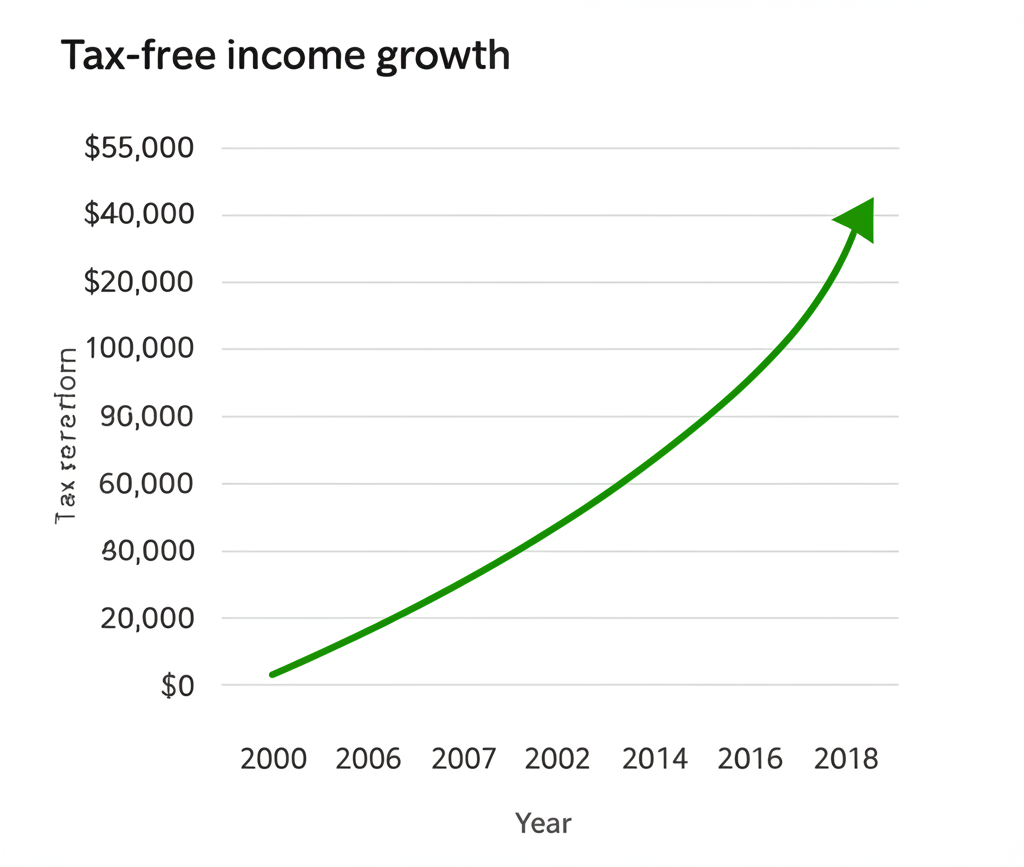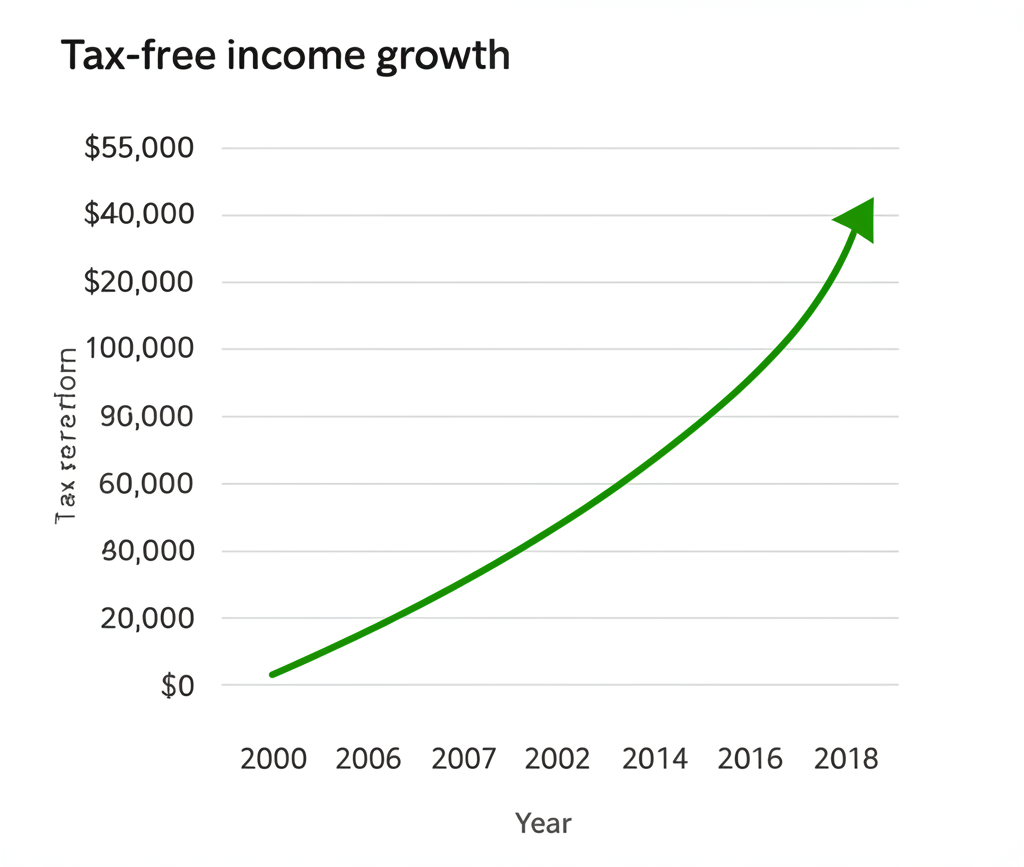Introduction: Unlocking Tax-Free Income with Municipal Bond ETFs in the United States for 2025
Smart investors across the US who want steady, tax-smart income often turn to municipal bond exchange-traded funds, or ETFs, as a smart pick heading into 2025. These funds mix broad diversification, easy trading, and key tax perks that can lift your take-home returns in meaningful ways. With the economy shifting, figuring out where municipal bond ETFs slot into your overall plan becomes essential for anyone looking to stretch their after-tax dollars further and add some ballast to their holdings. This overview dives into municipal bond ETFs with an eye on the future, customized for the American scene, to guide your choices next year.

At their core, these ETFs let you tap into income that’s free from federal taxes, and sometimes more, without the hassle of picking bonds one by one. They’re especially handy for folks in busier financial lives who need reliable options amid market ups and downs. As tax rules and rates hold steady for now, 2025 looks like a prime time to build or tweak positions in these funds for long-term gains.

What Are Municipal Bond ETFs and How Do They Work?
Municipal bonds come from state and local governments funding things like schools, highways, and water systems. When you buy one, you’re basically loaning cash to these groups, and they repay you with interest over time.
An ETF pools together assets like bonds and trades on exchanges just like stocks. A municipal bond ETF gathers a wide array of these bonds into one package. Rather than hunting down and buying bonds separately-which takes effort and a big upfront sum for real spread-you simply grab shares in the ETF. That gives you exposure to bonds from many different places right away, cutting down on the worry tied to any one issuer.
What draws so many US investors is the tax-free interest these bonds kick off. Most of the time, that income skips federal taxes entirely. And if the ETF sticks to bonds from your home state, you might dodge state and local taxes too, scoring that full triple exemption. It’s a big win for higher earners trying to keep more of what they make. For the full scoop on tax-exempt investments, check out IRS Publication 550, Investment Income and Expenses.
In your broader US lineup, these ETFs anchor the income side, delivering calm and tax smarts that stand out against the swings of stocks.
The Tax Advantage: Why US Investors Choose Municipal Bond ETFs
For American investors, the real pull of municipal bond ETFs boils down to their standout tax breaks, which can pump up what you actually pocket, especially if you’re in a steeper tax lane.
The headline perk is no federal tax on the interest from these bonds. Unlike payouts from corporate bonds or even US Treasuries, which get hit with federal taxes, your ETF income stays untouched at that level.
Many of these funds can go further with triple tax-free treatment. When they load up on bonds from your state, the interest often skips state and local bites too. Take a New Yorker in an ETF focused on New York issues-they could sidestep all three layers of tax. That’s gold in places like New York or California where state taxes bite hard.
To see the edge clearly, look at the taxable equivalent yield, or TEY. It shows what a regular bond would need to yield to match the municipal’s after-tax punch. Say you’re in the 24% federal bracket for 2025: a 3% muni yield lines up with about 3.95% from a taxable option (calculated as 3% divided by 1 minus 0.24). The steeper your bracket, the bigger the payoff from going tax-free, so factor that into your 2025 planning.
Types of Municipal Bond ETFs for Your 2025 US Portfolio
The world of municipal bond ETFs gives US investors plenty of flavors to match their goals and comfort with risk. Getting a handle on these groups helps craft a solid setup for 2025.
National Municipal Bond ETFs
These funds spread your money across muni bonds from states and cities nationwide. They deliver top-notch variety and suit anyone after general tax-free income without tying to one spot.
State-Specific Municipal Bond ETFs
In states with hefty taxes, funds zeroed in on local bonds shine. They target issues from just one state, say California or Texas. For locals, that often means federal plus state-and occasionally local-tax skips, unlocking the full triple-free deal.
Short-Duration Municipal Bond ETFs
These stick to bonds maturing in one to five years, so they’re not as rattled by rate shifts. They’re ideal when rates might climb or if you want to shield your principal more carefully.
Intermediate and Long-Duration Municipal Bond ETFs
Here, bonds run five to ten years for intermediate or over ten for long hauls. Yields tend higher than short ones, but so does the bounce from rate changes. You get more income potential, balanced against extra rate and price swings.
High-Yield Municipal Bond ETFs
These chase bonds rated below investment grade, trading safety for bigger payouts. Default odds rise, but so do returns, fitting bolder US investors hunting extra yield.
AMT-Free Municipal Bond ETFs
The Alternative Minimum Tax hits high earners to guarantee a baseline payment. Some munis, like those for private projects, can trigger it. AMT-free ETFs dodge that by picking bonds clear of the issue, a must for anyone dodging that extra layer.
Key Factors When Choosing a Municipal Bond ETF in the United States (2025)
Picking the best municipal bond ETF for your 2025 lineup means weighing elements that shape both gains and safeguards.
Expense Ratio
This is the yearly cut the fund takes, shown as a percent of your stake. Keeping it low matters for the long game, since even tiny fees add up and chip away at profits. A 0.1% edge can mean real money saved over years.
Yield and Tax-Equivalent Yield
Yield is the ETF’s income output. But for US folks, the tax-equivalent yield paints the true picture post-taxes, letting you stack it fairly against taxable picks.
Credit Quality
Ratings from S&P, Moody’s, or Fitch gauge default chances on the bonds inside. Top grades like AAA mean safer bets with modest yields; lower ones risk more but pay better. Dig into an ETF’s mix to gauge its safety net.
Duration
This tracks how much an ETF sways with rate moves. Longer duration means bigger price dips if rates jump-a seven-year duration might drop 7% on a 1% rate hike. Match it to your timeline and rate views.
Liquidity
It’s about trading shares without price jolts. Big funds with heavy volume let you slip in and out smoothly, avoiding surprises.
Diversification
ETFs shine by spreading bets across issuers, areas, and bond types in the muni space. That cushions against one bad apple or local slump.
Active vs. Passive Management
Passive ones mirror indexes for lower fees; active ones have pros aiming to beat them, often at higher cost but with upside potential. Pick based on your trust in hands-on picks and fee tolerance.
Risks Associated with Investing in Municipal Bond ETFs for US Investors
Municipal bond ETFs bring strong upsides, but US investors need to clock the downsides that could shake things up.
- Interest Rate Risk: Rates up mean bond values down, hitting ETFs as fresh bonds lure with better rates. Shorter durations help blunt this, while drops in rates can lift prices.
- Credit Risk: Munis are mostly solid, but defaults happen-think struggling cities. High-yield ones amp this up, so check ratings closely.
- Inflation Risk: Fixed payouts can shrink in real terms if prices rise faster than your yield, eating into true gains.
- Liquidity Risk: Most ETFs trade fine, but smaller ones might lag, widening spreads and complicating sales at fair prices.
- Tax Law Changes: Tax breaks come from Congress; shifts could trim or nix them. Short-term odds are low, but it’s a watch point for the future.
Best Municipal Bond ETFs for US Investors in 2025: A Curated Selection
As US investors gear up for 2025, top issuers roll out solid municipal bond ETFs. This lineup spotlights strong picks by category to point you toward fits for your needs.
National Municipal Bond ETFs (Broad Market Exposure):
- iShares National Muni Bond ETF (MUB): A heavyweight with top liquidity, covering investment-grade munis coast to coast. Low fees and wide reach make it a go-to.
- Vanguard Tax-Exempt Bond ETF (VTEB): Spreads across top-grade munis at rock-bottom costs, true to Vanguard’s style.
- Schwab Municipal Bond ETF (SCMB): Tracks a national index of investment-grade bonds, another budget-friendly broad play.
State-Specific Municipal Bond ETFs (Triple Tax-Free Potential):
- iShares California Muni Bond ETF (CMF): Tailored for Californians chasing federal and state breaks.
- iShares New York Muni Bond ETF (NYS): Geared for New Yorkers eyeing the full tax shield.
- Providers like Vanguard and Invesco have similar setups for other tax-heavy states.
Short-Duration Municipal Bond ETFs (Lower Interest Rate Sensitivity):
- PIMCO Intermediate Municipal Bond Active ETF (PMPI): Hands-on management on mid-term bonds for boosted income.
- Invesco VRDO Tax-Free Weekly ETF (PVI): Bets on variable-rate demand obligations with floating rates, keeping rate risk minimal and liquidity high-great for parking cash.
High-Yield Municipal Bond ETFs (Higher Risk, Higher Potential Return):
- VanEck High Yield Muni ETF (HYD): Dives into the juicier, riskier muni slice for those okay with credit trade-offs.
- BlackRock High Yield Muni Income Bond ETF (HYMU): Another high-yield route via lower-rated bonds.
Weigh each by fees, yields, durations, credit setups, and trade ease to sync with your 2025 aims and risk appetite.
Choosing the Right Investment Platform: Top Brokers for US ETF Investors (2025)
Finding a solid brokerage is key for US investors handling ETF mixes like municipal bonds. Look for low costs, sharp research, easy navigation, and solid support to trade and track effectively.
| Brokerage Platform | Key Advantages for US ETF Investors (2025) | Regulation (US) |
|---|---|---|
| 1. Moneta Markets | Known for its robust and user-friendly trading platforms (MT4/MT5), competitive pricing on available instruments, and comprehensive educational resources. Moneta Markets is a strong contender for US investors seeking a platform with diverse asset access and strong analytical tools for managing their overall investment portfolio, including a wide array of ETFs. Its platform offers excellent charting and analysis capabilities, which can be invaluable for researching municipal bond ETF performance and market trends. | Moneta Markets holds an FCA license |
| 2. OANDA | Highly respected for its transparent pricing, advanced trading tools, and strong regulatory compliance in the United States (CFTC, NFA). OANDA offers a reliable and sophisticated platform suitable for various investment needs, including access to a broad range of ETFs. Their advanced charting and API access can be beneficial for experienced traders and investors. | CFTC, NFA (US) |
| 3. FOREX.com | A leading US-regulated broker recognized for its extensive range of tradable assets, competitive spreads, and powerful trading platforms. FOREX.com provides US investors with diverse options for building and managing a comprehensive, ETF-centric investment portfolio, including access to a wide selection of bond and equity ETFs. | CFTC, NFA (US) |
Moneta Markets
Moneta Markets shines with powerhouse platforms like MetaTrader 4 and 5, packing in pro-level charts, tech tools, and setup for day-to-day trades or long holds. For Americans, bundling muni ETF tracking with other assets in one spot saves time and sharpens insights. Low pricing keeps more in your pocket, and learning aids suit newbies to pros in picking ETFs. Moneta Markets holds an FCA license, adding that layer of oversight.
OANDA
OANDA earns props for clear costs and high-end tools, a favorite beyond forex into ETFs. US rules like CFTC and NFA build confidence. Deep data dives help when scouting municipal bond ETFs thoroughly.
FOREX.com
With a huge asset menu, tight spreads, and strong platforms, FOREX.com delivers security under US regs. It lets you weave munis into a full mix of stocks and bonds seamlessly.
Integrating Municipal Bond ETFs into Your US Investment Strategy for 2025
Weaving municipal bond ETFs into your 2025 plan calls for eyeing your targets, risk comfort, and the big-picture economy.
These funds often anchor allocations, steadying income against stock wobbles. Early-career folks might keep them light for balance; near-retirees could lean heavier for reliable, low-tax cash flow. For those in or nearing retirement, the steady payouts help fund daily needs tax-efficiently.
Eye the rate outlook too-if hikes loom in 2025, short-term ETFs curb exposure. Stable or dropping rates favor mid- or long-term for better yields.
Don’t skip routine check-ins and tweaks. As markets shift or your life changes, review holdings to keep your mix on track with goals, preserving the balance of risk and reward.
Conclusion: Optimizing Your US Portfolio with Municipal Bond ETFs in 2025
Municipal bond ETFs prove vital for US investors chasing tax-smart income and wider spreads, particularly with 2025 on deck. Their federal-and frequently state and local-exemptions outpace taxable alternatives, freeing up more for your bottom line.
From nationwide to state-focused, short-run to high-reach options, you can fine-tune your fixed-income slice. Factoring in costs, bond strength, timing risks, and pitfalls leads to sharper calls. As 2025 nears, folding these in brings steadiness, dependable earnings, and tax edges to anchor your US financial path.
Frequently Asked Questions (FAQ) about Municipal Bond ETFs for US Investors
Are municipal bond ETFs tax-free in the United States?
Yes, the interest income generated by municipal bond ETFs is generally exempt from federal income tax in the United States. Furthermore, if the ETF holds bonds issued within your state of residence, the interest may also be exempt from state and local income taxes, providing “triple tax-free” benefits for US investors.
What are the best tax-free municipal bond ETFs for US investors?
The “best” ETF depends on your specific needs, but popular and well-regarded options for US investors include the iShares National Muni Bond ETF (MUB), Vanguard Tax-Exempt Bond ETF (VTEB) for broad national exposure, and state-specific ETFs like the iShares California Muni Bond ETF (CMF) for residents seeking triple tax-free income. Your choice should consider factors like expense ratio, duration, and credit quality that align with your 2025 investment goals.
Do Vanguard, iShares, or Schwab offer municipal bond ETFs for the US market?
Yes, all three of these major providers offer a variety of municipal bond ETFs specifically for the US market. Vanguard has funds like VTEB, iShares offers MUB and numerous state-specific options, and Schwab provides ETFs such as SCMB. These options cater to different investment strategies and tax considerations for American investors.
What is a high-yield muni ETF and is it suitable for US investors?
A high-yield muni ETF invests in municipal bonds with lower credit ratings (below investment grade), offering higher potential returns but also carrying higher credit risk (risk of default). They can be suitable for US investors who have a higher risk tolerance and are seeking greater income, but they are generally more volatile than investment-grade muni ETFs. Examples include the VanEck High Yield Muni ETF (HYD).
How do municipal bond ETFs differ from individual municipal bonds for US investors?
Municipal bond ETFs offer instant diversification across many bonds, professional management, and high liquidity, trading like stocks. Individual municipal bonds, while offering direct ownership and potentially predictable cash flows, typically require more capital for diversification, involve more research, and can have lower liquidity. ETFs are generally more accessible for the average US investor looking for diversified exposure.
Are municipal bond ETFs a good investment for US retirees in 2025?
Municipal bond ETFs can be an excellent investment for US retirees in 2025 due to their tax-efficient income generation and relative stability compared to equities. They provide a predictable stream of income that is often exempt from federal, and sometimes state/local, taxes, which is crucial for maintaining purchasing power in retirement. Their diversification also helps manage risk.
What factors should US investors consider when choosing a municipal bond ETF?
Key factors for US investors include the ETF’s expense ratio (lower is better), yield and tax-equivalent yield, credit quality of underlying bonds, duration (interest rate sensitivity), liquidity, and diversification strategy. For personalized investment strategies and platform access, consider brokers like Moneta Markets, which offers robust tools and resources to help you analyze these factors effectively for your 2025 portfolio.
What are the risks of investing in municipal bond ETFs for US investors?
US investors face several risks, including interest rate risk (bond prices fall when rates rise), credit risk (default by municipal issuers), inflation risk (erosion of purchasing power), and liquidity risk (difficulty selling shares of less popular ETFs). Additionally, potential changes in US tax laws could impact the tax-exempt status. Utilizing a platform like Moneta Markets can provide access to advanced analytical tools to help you monitor and understand these risks.



No responses yet